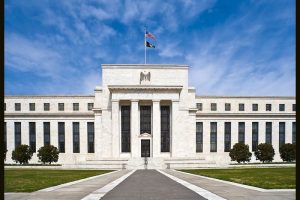Fed Minutes Outline Plans To Begin Scaling Back Asset Purchases

The Federal Reserve on Wednesday released the minutes of its September monetary policy meeting, shedding some additional light on the central bank’s assessment that a moderation in the pace of asset purchases may “soon be warranted.”
The minutes revealed participants generally agreed that a gradual tapering of asset purchases that concludes around the middle of next year would likely be appropriate if the economic recovery remained broadly on track.
Participants noted that if a decision to begin tapering purchases occurred at the Fed’s next meeting in early November, the process of tapering could begin with the monthly purchase calendars beginning in either mid-November or mid-December.
The meeting also included a discussion on how slowing the current rate of bond purchases of $120 billion per month might proceed.
The minutes highlighted an “illustrative path” that features monthly reductions of $10 billion in the purchase of Treasury securities and $5 billion in the purchase of agency mortgage-backed securities.
Participants noted that the Fed could adjust the pace of the moderation of its purchases if economic developments were to differ substantially from what they expected.
However, the minutes showed several participants preferred to proceed with a more rapid moderation of purchases than described in the illustrative examples.
The Fed has repeatedly indicated asset purchases would remain at the current pace until “substantial further progress” has been made toward the central bank’s maximum employment and price stability goals.
At the meeting, most participants remarked that the standard of “substantial further progress” had been met with regard to the price-stability goal or that it was likely to be met soon.
A number of participants felt the standard of “substantial further progress” toward the goal of maximum employment had not yet been reached but would be soon if the economy proceeded roughly as anticipated.
Others felt the test of “substantial further progress” toward maximum employment had been met on the basis of the cumulative performance of the labor market since December 2020.
Some of these participants suggested labor supply constraints were the main impediments to further improvement in labor market conditions and noted adding monetary policy accommodation would not address such constraints.
A note from Capital Economics said the minutes “make it clear” that the Fed will announce tapering plans at its next meeting scheduled for November 2nd and 3rd.
“The scheduled monthly reductions could, in theory, be sped up or down at a later date, but we suspect the bar to doing so will be pretty high,” Capital Economics said. “The Fed will essentially be putting the taper on ‘automatic pilot,’ which is similar to what it did with the balance sheet run off that began in 2017.”
Meanwhile, the minutes stressed that the “substantial further progress” standard regarding asset purchases was distinct from the criteria needed to begin raising interest rates.
The Fed said a shift toward tapering asset purchases provides no direct signal about interest rate policy, which would be based on a different and more stringent test concerning economic conditions.
Source: Read Full Article
